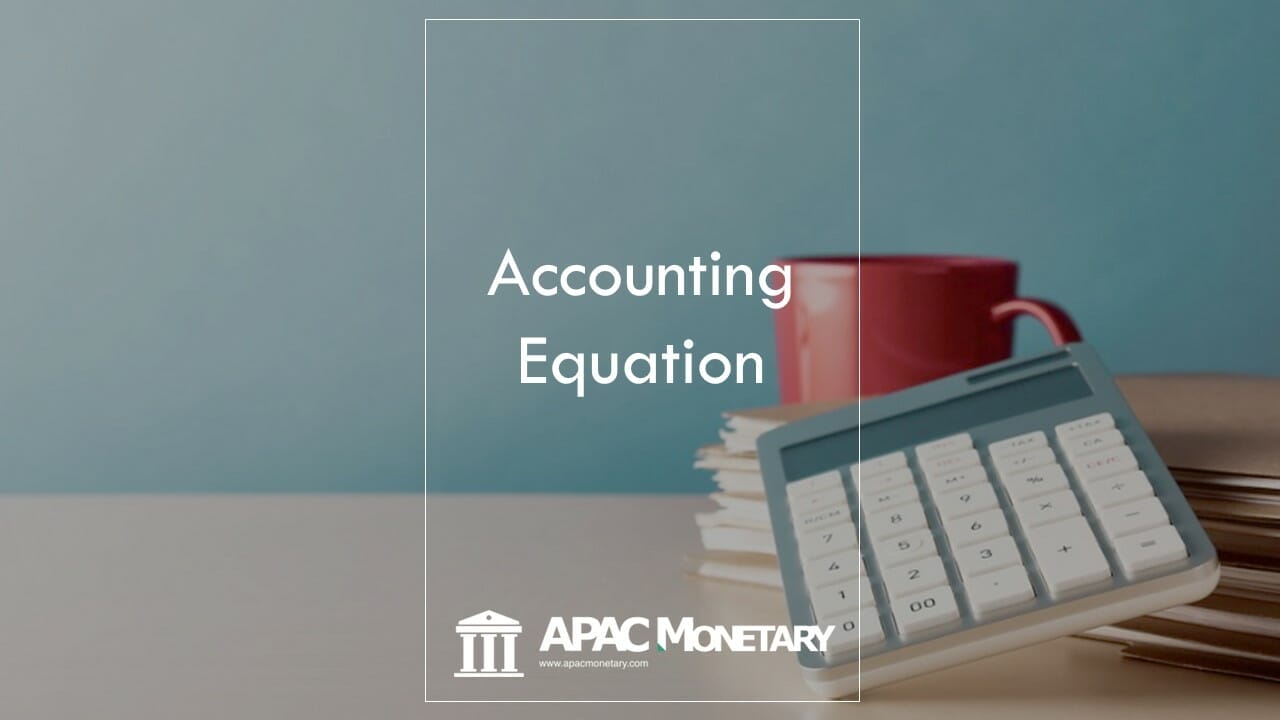Table of Contents
In this article, we will discuss the formula for the accounting equation. We will also provide some tips on how to use it effectively.
Accounting Equation Formula
The accounting equation is a mathematical formula used in accounting. It is used to calculate financial statements such as the income statement and the balance sheet.
The basic form of the accounting equation is:
Income = Expenses + Equity
In order to use the equation, you first need to know your company’s net income (Income minus expenses).
You can find this information on your company’s income statement.
Then, you need to figure out how much each expense category contributes to net income ( Expenses ).
The final step is to add up these contributions ( Equity ) to get your total net income.

What is an Accounting Equation?
An accounting equation is a mathematical model used to calculate financial statements.
The basic equation is Y = C + I + G, where Y represents revenue, C represents costs of goods sold, I represents inventory costs, and G represents gross profits.
Benefits of Accounting Equation for Accountancy Students
An accounting equation is a mathematical formula that is used to calculate the financial statements of a business.
The benefits of using an accounting equation are that it is more accurate and less time-consuming than traditional methods.
Additionally, it can help to simplify the financial statements and make them more understandable.
By using the equation, professional accountants and accountancy students can determine how much money each category of a company’s finances have changed over a certain period of time. This information can help them make informed decisions about how to manage their businesses.

How to Use the Accounting Equation
There are a few steps you need to follow to use the accounting equation.
First, you need to know the total value of all assets and liabilities.
Next, you need to calculate the gross profit.
Finally, you need to subtract C from Y to find revenue.

How is an Accounting Equation Formulated?
An accounting equation is a mathematical formula used in accounting to calculate the financial effects of changes in assets, liabilities, and equity.
The equation uses basic arithmetic operations to calculate the effect of each change on the balance sheet.
The Three Basic Components of an Accounting Equation
An accounting equation is a mathematical formula that helps calculate financial statements.
The three basic components of an accounting equation are assets, liabilities, and equity.

Assets
Assets represent the value of what a company owns, such as cash and investments.
An accounting equation is used to calculate a company’s net worth. This equation calculates the total value of a company’s assets (cash and investments) minus the total value of its liabilities. This calculation determines a company’s net worth, which is one measure of a company’s financial health.
Liabilities
Liabilities represent the amount of money that a company owes to creditors, such as loans and credit card debt.
The liabilities column of a company’s balance sheet usually refers to the amount of money that the company owes to creditors. This can include loans and credit card debt, among others. The assets column typically refers to the value of the company’s assets, such as cash and investments. By comparing these two columns, investors can get an idea about a company’s financial stability.
Equity
Equity represents the value of ownership in a business, such as shares of stock or ownership in another business entity.
Equity is important because it represents the net worth of a business. Net worth is the total value of all assets, minus all liabilities. A company with a high equity value has more money available to pay off debts and invest in new businesses. Conversely, a company with low equity values may have to borrow money to stay afloat. The equation that calculates equity is:
Equity = Net Worth
This equation shows how equity (net worth) relates to a company’s overall success.

The Accounting Equation Formulas
The accounting equation is a tool that can be used to calculate financial statements. It consists of two parts: the assets and liabilities sections.
To use the equation, you first need to know the following information:
The amount of each asset
The accounting equation is used to calculate the amount of each asset on a company’s balance sheet. The equation uses the total value of all assets, subtracting the total value of all liabilities. This information is then used to create a financial statement that shows how much money a company has in its bank account, how much it owes to others, and how profitable its operations are.

The amount of each liability
An accounting equation is a mathematical formula that helps to determine the amount of each liability on an account sheet.
This equation can be used to help to simplify financial statements and make them easier to understand. For example, if an organization has a total of $10,000 in accounts payable outstanding, the accounting equation would show that $5,000 is owed in cash and the remaining $5,000 is owed in accrued liabilities (such as payday loans).
The total value of all assets
The total value of all assets is the sum total of all the money, property, and other valuable items that a business owns. It can be used to measure a company’s financial health, and help decide how much money to raise in an Initial Public Offering (IPO).
Accounting equations are mathematical formulas that allow businesses to track changes in their assets over time. This information can be used to make decisions about how much money to spend on things like advertising or new equipment.

The total value of all liabilities
An accounting equation is a mathematical formula that helps in calculating the value of a business’s liabilities.
The equation takes into account both the assets and the liabilities of a business. This is important because it allows businesses to understand their financial stability and how they are likely to fare in the future.
The equity (the difference between liabilities and assets)
An equity equation shows the difference between liabilities and assets. This information is used to calculate a company’s net worth.
The equation looks like this: liabilities – assets = net worth. This calculation helps companies determine whether they are solvent and in a position to pay their debts.

How to Interpret an Accounting Equation
An accounting equation is a mathematical formula used in accounting that helps to calculate financial statements. It consists of two sides, the left side representing assets and liabilities, and the right side representing equity. The equation can be used to determine a company’s financial position at any given point in time.
One of the most important aspects of an accounting equation is its ability to provide transparency into a company’s finances. By understanding what is on each side of the equation, investors and other stakeholders can get a better sense of a company’s health and future prospects. Additionally, an accounting equation can help managers make informed decisions about how to allocate resources and manage risk.

18 Tips for Perfecting Your Accounting Equation Formula
There are a few tips that can help you perfect your accounting equation formula.
The accounting equation is a mathematical equation that helps to calculate financial information. It is used in accounting, bookkeeping, and business analysis.
An accounting equation can be used to calculate a variety of financial details, including revenue, expenses, and net income. By understanding the equation and using the right tips, you can create accurate financial reports.
Here are five tips on how to use the accounting equation:
1. Start with the basics
If you don’t have all of the information required to solve an equation, start by working with the most important pieces first. This will help you get a solid foundation for your calculations.
2. Use parentheses liberally
The accounting equation is complex, so it can be difficult to understand without them. Add parentheses wherever necessary to make your calculations easier to read and follow.
3. Be consistent with your units of measurement
When using different units of measurement (e.g., pounds vs meters), be sure to use them consistently throughout your equations and reports. This will help avoid confusion and ensure accuracy of your results.
4. Work with whole numbers only when possible
Whole numbers are simpler to work with than fractions or decimals, so they’re ideal when calculating financial data using the accounting equation formula.
5. Check your work!
Once you’ve completed your calculations, double-check them for accuracy before proceeding any further. Any mistakes could lead to inaccurate results or incorrect conclusions about your company’s finances.
6. Relevant information
Make sure to include all of the necessary information in your equation.
This includes the type of business, the revenue and expenses you have recorded, and the financial statements that you rely on to make your calculation.
Get all relevant information before you start calculating an equation. This will ensure accuracy and precision.
7. Be consistent
Be consistent in how you calculate each factor in your equation. This will help ensure that all calculations are accurate and consistent.
8. Track changes
Keep track of any changes that occur in your business over time.
If there is a change in revenue or expenses, for example, be sure to adjust your equation accordingly so that it remains accurate over time.
9. Income or loss
Use the equation when calculating net income or loss.
Net income is simply income minus expenses, while net loss is equal to losses plus profits. To use the accounting equation, you first need to determine your net income or loss. To do this, take your revenue (Y) and subtract your costs of goods sold (C).
10. Depreciation or amortization
Use the equation when calculating depreciation or amortization.
Depreciation and amortization are two important financial statement calculations that rely on the accounting equation. To calculate depreciation, divide Y by C and multiply by a percentage rate (usually 25%). Then, add this number back into revenue in order to find the cost of goods sold for that period of time.
Similarly, amortization works in reverse; add back in the cost of goods sold from previous periods (in addition to any new purchases) and divide by Y in order to find inventory value at that point in time.
11. Cash flow to stay afloat
Use the equation when figuring out how much cash flow needs to be generated each year in order for a company to stay afloat financially. The cash flow calculation uses revenue (Y), costs of goods sold (C), net income or loss (N), and equity (E). This calculation can be used as part of an early warning system for businesses – if revenues don’t match up with what was predicted based on past data, it might be time for some tough decisions about cuts or new investments needed in order for a business to survive longterm.
12. Use a calculator
If you don’t have access to a calculator, you can still use an equation to make calculations. However, it will take longer and may be more difficult.
13. Organize your data
When working with equations, it is important to organize your data in a logical way. This will help you make sense of the information and find solutions faster.
14. Be patient and persistent
The accounting equation can be tricky, but with practice, you’ll eventually be able to solve problems quickly and accurately.
15. Linear equation
Try to use a linear equation whenever possible. This will make the calculations easier and faster.
16. Profitability
Use the equity section of the equation to find out how profitable your company is overall. This can help you make strategic decisions about your business.
17. Deductions
Be aware of the deductions that are allowed in your business. These deductions can affect your total net income.
18. Expenses
Make sure all of your expenses are appropriate for your business. For example, if you are a restaurant, you should include costs such as rent, wages, and food expenses in your calculation of net income.
19. Logical
Use the accounting equation in a logical way. Try not to over-interpret the results of the equation. Just remember that it allows you to calculate financial statements accurately and efficiently.
Conclusion: Accounting Equation for Accountancy Students
With these tips, you can perfect your own accounting equation formula and use it to its full potential in your business or personal accounting needs. You can see, the accounting equation is a very important tool in financial reporting. By understanding how it works and using it to calculate financial statements, you can better understand your business and its finances.










